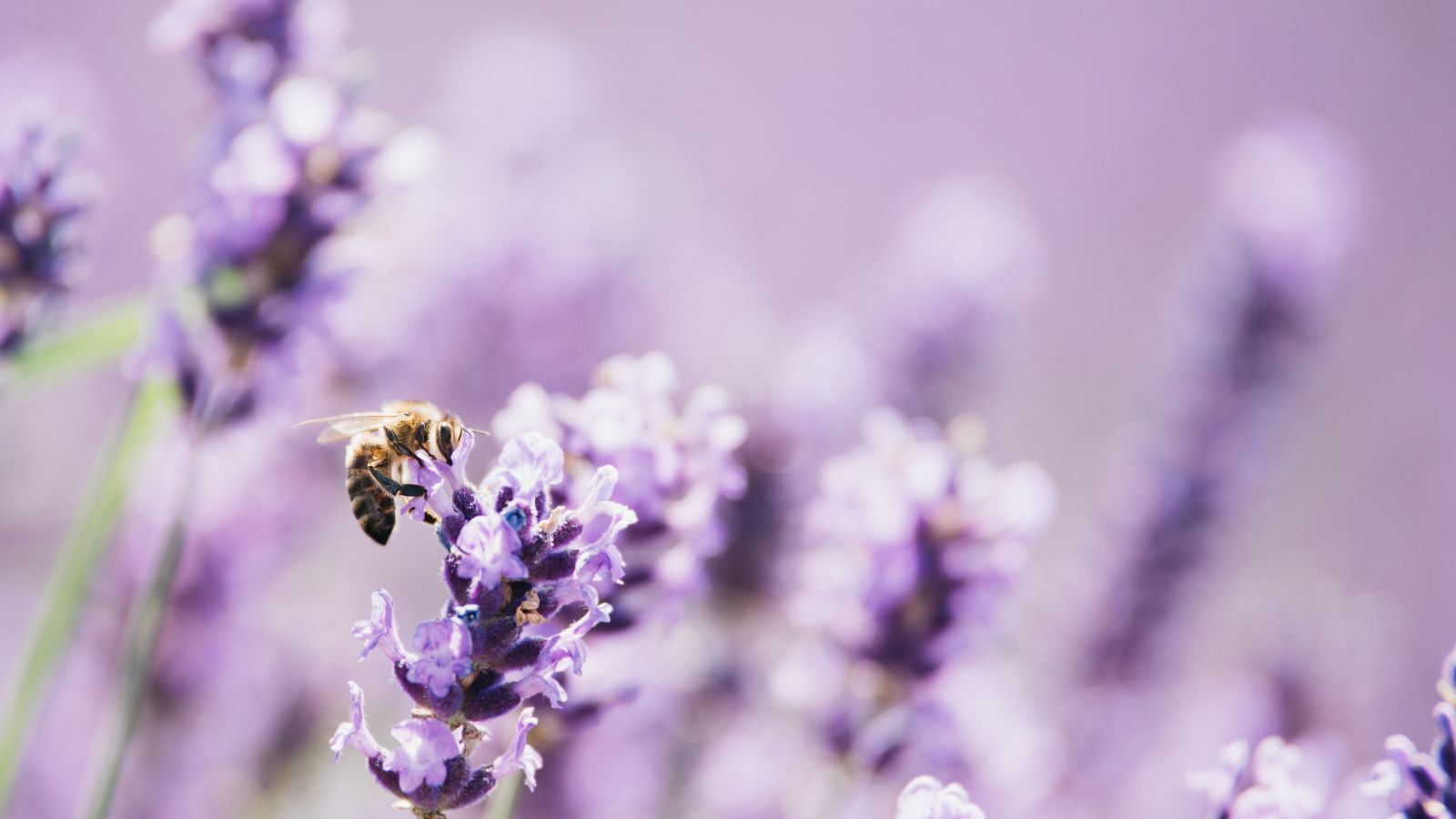
Is Lavender a Perennial? Why It Keeps Coming Back
Photo Credit: Canva Pro
Lavender is a popular plant known for its calming scent and pretty purple flowers. Lots of people want to know, "Is lavender a perennial?" Lavender is generally a perennial plant, but its ability to grow back annually depends on the species and local climate conditions.
You'll learn how long lavender lasts, how to keep it safe in the winter, what it needs to grow well, and what plants you shouldn't put near it in this article.
🌸 Try Lavender + Peppermint Chocolate Now!
Is Lavender a Perennial?
Photo Credit: Canva Pro
In the event that you take good care of your lavender plant, it will grow back every year. This pretty plant is in the mint family, and its lavender blue flowers are said to calm people down. Lavender can live for 10–15 years or more in ideal conditions, though this lifespan varies by species and care regimen.
Lavender’s Life Cycle and Types like
Lavender is a semi-woody evergreen shrub in USDA zones 7 and above, but may behave more like a deciduous perennial in colder climates. There are different kinds of lavender, and each one needs different care. All these types grow best with full sun and in well drained soil.
-
English lavender: Cold-hardy and best for zones 5 and up; great for cooking and dried lavender.
-
French lavender: Bigger flowers and faster growth, but less cold-tolerant.
-
Spanish lavender: Compact with showy flower heads; needs warm climates.
What Makes Lavender a Perennial?
Should you plant lavender in the right place and give it the care it needs, it will come back every year. Lavender will stay healthy and bloom beautifully every year if you apply these growing tips
-
Soil needs: Grows best in sandy soil or well-drained clay soil.
-
Winter care: Needs winter mulch or evergreen boughs to survive cold temperatures.
-
Where to plant: Works well in raised beds or as potted lavender you can move indoors.
Can Lavender Survive Winter?
Photo Credit: Canva Pro
Lavender can last through the cold hardy varieties, especially hardy types like English lavender. But not all of them can live through freezing temperatures on their own. Lavender plants from France and Spain need extra care, especially in colder places.
Cold Hardy vs. Tender Lavender
When it gets cold, different kinds of lavender react in different ways. It's important to know what kind you're growing. If you live in a cold or wet area, choose the right variety or grow it in containers.
-
English lavender: Can handle winter temperatures down to zone 5.
-
French and Spanish lavenders: Only do well in zones 8 and above.
-
Potted lavender: Easy to move indoors during cold months for protection.
Winter Protection Tips
Lavender roots don't like being cold and wet. Persistent soil moisture in winter can promote fungal diseases such as Phytophthora root rot; ensure excellent drainage. If you take good care of your plant, it will stay alive all season. In humid climates, make sure the plant has space around it for good air circulation and dries out between waterings.
-
Use mulch: Add winter mulch or cover with evergreen boughs to protect roots.
-
Improve drainage: Use pea gravel or grow in raised beds to avoid soggy soil.
-
Allow airflow: Ensure proper air circulation to prevent mold and disease.
What Is the Lifespan of a Lavender Plant?
Photo Credit: Canva Pro
If you take good care of lavender, it can live for many years, usually 10 to 15 years. Some people have lavender that has been alive for more than 20 years! But not taking care of it properly, having bad soil, or not pruning it can cut its life short.
How Long Lavender Lives
It grows quickly the first few years, but it might slow down if you don't prune it or take good care of the soil.
-
Common signs of aging: Bald spots in the center, fewer flower buds, or weak stems.
-
Prune regularly: Prune lavender in early spring or after it blooms to keep it full.
-
Avoid overcrowding: Give it space for good air circulation and healthy growth.
Tips for Growing Lavender Long-Term
Start taking care of your plant early on if you want it to bloom for years, dry lavender, and make fresh lavender oil.
-
Sunlight is key: Choose a full sun location.
-
Choose the right soil: Use sandy soil or mix in gravel with clay soil for drainage.
-
Watch water levels: Lavender is drought tolerant and doesn’t need much water.
-
Prevent moisture buildup: Avoid poor air circulation by spacing plants properly.
Does Lavender Like Sun or Shade?
Photo Credit: Canva Pro
It grows best where it gets full sun. If it doesn't get enough sun, it might bloom less and grow taller. One of the most important things you need to do to grow lavender well is make sure it gets enough sunlight. During the growing season, it's even more important to give lavender as much light as possible in colder climates.
Sunlight Needs for Healthy Lavender Growth
To get stronger and make more flowers, lavender needs to be in direct sunlight. The plant makes the oils that make the flowers smell so good when it gets sun.
-
Minimum sunlight needed: Give the plant 6 to 8 hours of full sun each day.
-
Best lavender varieties for sunny spots: Try English lavender, Royal Velvet, or French lavender.
-
Too little sunlight causes: Fewer flower stems, weak green foliage, and fewer essential oils.
Finding the Right Spot for Planting Lavender
Your plant will do best if you put it in the right spot in the garden. Lavender struggles in low-light areas and in soils that retain moisture, which can lead to fungal diseases and poor flowering. Sun helps lavender grow fuller and develop its beautiful silvery foliage and highly fragrant flowers.
-
Ideal location: Choose a south-facing area with plenty of open space and sun.
-
For containers: Keep potted lavender in a sunny spot all day.
-
Poor placements to avoid: Stay away from shady corners or spots that hold too much moisture.
What Should Not Be Planted Next to Lavender?
When you plant lavender, you should keep it away from plants that need different conditions to grow. Lavender does best in dry, sunny places. It won't do well next to plants that like wet or shady spots.
Plants That Don’t Grow Well with Lavender
Some plants can slow down the plant’s growth or even increase the risk of disease. Better yet, keep lavender away from them.
-
Avoid mint: It spreads fast and needs a lot of water—bad for lavender’s roots.
-
Skip impatiens: They love shade and constant moisture, which lavender dislikes.
-
Don’t use camellias nearby: They grow tall and block sunlight.
-
Stay away from hostas: These plants prefer cool, wet soil, the opposite of what lavender needs.
Planting lavender next to the wrong plant can stop you from getting full blooms or healthy new growth.
Why Spacing and Compatibility Matter
When plants are spaced out correctly, air flows around them, which is good for their health and the quality of their blooms. It also helps maintain the plant’s shape and keeps diseases away. This kind of thoughtful planning helps your entire herb garden stay balanced and healthy.
-
Poor spacing causes: Mold, weak blooms, and limited growth.
-
Better companion herbs: Use rosemary, thyme, or oregano—they prefer dry soil like lavender.
-
Leave space to breathe: Give each plant enough room for good air circulation and access to direct sunlight.
How FullyHealthy Supports a Lavender Lifestyle
FullyHealthy is an online store that sells clean, allergy-free goods. It helps people who want to be healthy naturally by eating plants. This shop has a lot of great options for people who like lavender or are on a special diet. These products are safe for people on the AIP diet and other restrictive plans.
What FullyHealthy Offers
FullyHealthy uses small brands that people know and trust. Their main goal is to provide tasty ways to enjoy the benefits of nature using high-quality, clean ingredients.
-
Lavender peppermint chocolate: Made with real lavender flowers and healthy sweeteners.
-
Cardamom chocolate with rose: A calming and flavorful treat that pairs well with herbal routines.
-
Ume plum vinegar: A pantry favorite that supports gut health and natural eating.
Lavender Products That Fit Your Routine
These products are a natural way to enjoy lavender every day if you like the way it smells and makes you feel calm.
-
Safe for special diets: Paleo, AIP, and gluten-free friendly.
-
No harsh additives: Only simple, real ingredients.
-
Perfect for everyday use: Great as gifts or self-care treats with essential oils and natural flavors.
Final Thoughts
If you do it right, growing lavender is fun and rewarding. Every step is important, from planting to pruning. Most types of lavender, including lavandula angustifolia, do best when they get a lot of sun, good drainage, and not much attention. As you plan your lavender field or grow a single plant in a pot, don't forget to check the root ball, give the plant enough room, and keep it safe in late summer or early fall.
If you want to enjoy dried lavender buds, make sure you pick them at the right time. As a bonus, some pale pink blooms may show up among the purple ones, giving your lavender field some color. In colder areas, don't just leave lavender alone; cover it with mulch to make it more resistant to cold and protect it from snow cover and fungal diseases. Give it supplemental watering only during dry spells.
FAQs
When is the best time to harvest dried lavender buds?
Harvest in early fall or late summer, when most flower spikes are blooming but before they fade. This ensures the dried lavender buds keep their scent and color.
Can lavender survive snow cover in winter?
Yes, but only if cold hardiness is considered. Most lavender like lavandula angustifolia can handle snow cover when planted in well-draining soil with protection like mulch.
Why does my lavender look pale pink instead of purple?
Some lavender varieties naturally bloom in pale pink. It's common in certain cultivars and still produces lovely scent and dried lavender buds.
What should I do if my lavender doesn’t receive ample sunlight?
Move it to a spot that receives ample sunlight. Without full sun, you risk weak growth, fewer flowers, and fungal diseases. Indoors, use grow lights if needed.
What are bunny ears and root ball in lavender?
Bunny ears is a nickname for Spanish lavender due to its flower shape. The root ball is the mass of roots at the base of the plant—handle it gently during transplanting.

Leave a comment